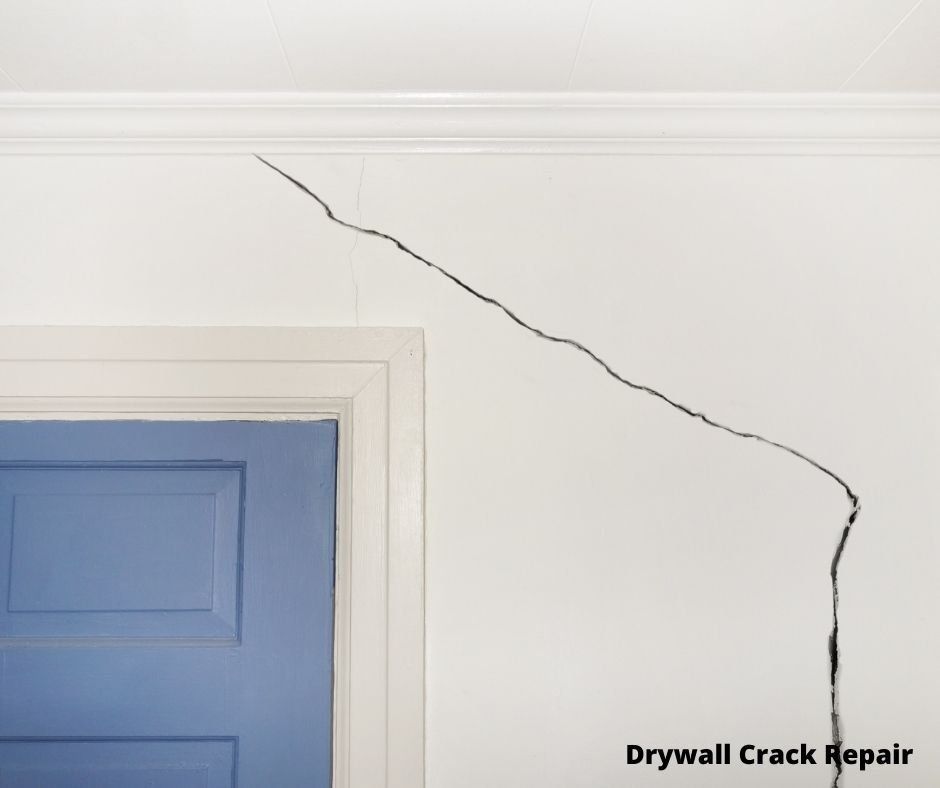Drywall Crack Repair
Crack Repair Phoenix
Drywall crack repair is simple as long as the correct process is followed. Most of the time you can repair drywall cracks without having to replace the original drywall. There are a couple different ways that can be utilized depending if the crack or cracks have been fixed before and keep coming back.
One way is to follow a process to repair drywall cracks:
1) V out the cracks
Grab your drywall blade and run it down along the drywall crack, with your blade slanted to the left and then slanted right, creating a v shape line.
2) Secure the drywall
Screw both sides of the crack on the sheetrock to any studs nearby and make sure either side isn't too loose.
3) Prefill with Hot mud or 5 min mud
Mix your 5 min mud and pre-fill all of the v gaps you cut out, once the hot mud has settled scrape it flat.
4) Mesh Tape
Grab your fiberglass mesh drywall tape and lay it down on all of your pre filled cracks from beginning to end, you may also use paper tape but, mesh tape is better for repairs.
5) Float
With your 5 min mud, float both sides of each drywall crack to smoothen them out and diminish any seams that might appear after paint. Be careful with adding excess joint compound because that will make the drywall repair look ugly and it will be hard to sand it down.
6) Skimming
Skim each drywall crack with a thin coat of joint compound before adding texture, to smoothen out the repaired area
7) Apply Texture
Apply texture with joint compound to your interior walls matching your existing ceiling or wall texture, depending on the texture whether it skip trowel, hawk and trowel or knockdown you'll be able to sand it while wet, or have to wait until it's completely dry in order to sand it. If its orange peel or popcorn texture then there will be no need to sand.
8) Paint
Finally paint your drywall repairs and enjoy a home without any drywall damage. If you had cracks all around your drywall you will most likely have to paint your entire room so that the paint can look even
Another Way To Repair If Crack Keeps Coming Back:
If a crack keeps coming back, a way to solve that problem is to cut out a square hole all round the diameter of the crack, then
replacing it with a new sheet of drywall, making sure the joints are around the crack and a solid surface where the crack was.
Free Instant quote!
House Settling Cracks
House settling cracks happen all too often, homeowners don't like seeing quarter inch or tiny cracks in their home, they worry that it could cause serious problems and want the drywall cracks repaired immediately.
However, it is important to understand why cracks in drywall occur. Houses settle over time causing internal and external stress to the your properties studs ultimately affecting your walls. The cause is tightening of some connections and expanding of others which causes drywall cracks.

Frequently Asked Questions
Do Houses Ever Stop Settling?
Houses won't completely ever stop settling. This is a fact of life and unavoidable for most homes. However, the rate at which a house settles decreases over time as a result of stabilization. There is no saying how much a home will stop settling because every property has its own unique conditions making each one different.
Some areas have higher chances of settling such as those around large areas of water, which results in looser soil. In addition, elevation can cause additional factors for settlement
Can You Fix Drywall Cracks Without Tape?
Simple answer is no, you can't fix cracks without tape. You can absolutely try, but the cracks will keep returning. Mesh or paper tape will help to keep the cracks from coming back, and avoid costly future repairs.
Mesh tape is recommended because the fibers are more flexible than paper tape which allow them to move with the material they are being attached to. Paper tapes have very rigid edges making it difficult for the sheet rock to bend in any direction
Can You Use Caulking Instead Of Drywall Mud?
No, you can't use caulking instead of drywall mud. Many homeowners have tried to get away with this "method" by applying it to stress cracks, but it does not work at all. Caulking won't dry and repair the same way that joint compound will. You cannot sand caulking, whereas joint compound can easily be sanding when and where needed.
Caulking should only be used where the ceiling and walls meet in order to leave a nice clean finish, you can wet a sanding sponge to wet your finger when necessary and leave the corners even cleaner!
